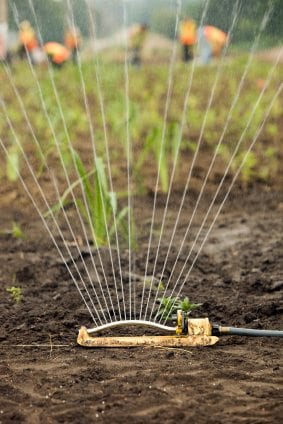No one chooses to cause damage to their home’s foundation. When foundation damage occurs, Dawson Foundation Repair offers the only comprehensive and permanent solution for repair. In some cases, however, a few simple steps by the homeowner could have helped to avoid the damage in the first place. That would have saved the homeowner considerable time and money. But what would those steps have looked like?
First Step
The primary cause of foundation damage, as we’ve described before, has to do with the strain placed on a foundation when moisture levels shrink and swell the ground under the homes. So, the first step that homeowners can take is to maintain consistent moisture levels in the soil around their home.
- Year-round, evenly watering the slab around the home with soaker hoses (7 to 12 inches from the grade beam) or using a buried foundation watering system
- Using sprinkler systems to assist in even soil conditions, but ensuring that some of the sprinkler heads are covering the slab areas
- Cleaning out gutters near the foundation that tend to pool water – always keeping water flowing smoothly away from the home’s slab
- Clearing away debris and locating downspouts so that water is carried at least 5-6’ away from the slab – even when using splash blocks
- Watching carefully for under slab plumbing leaks that can flood the soil without leaving visible traces of the leak (*Check water bills regularly for unexplained spikes in your water usage.)
Second Step
The second step of preventative maintenance is related to flower beds and the landscaping that lines the home’s foundation. Moisture levels must be controlled in these areas as well. Homeowners can be very passionate about a beautiful landscape, but correct landscaping will include several features to protect the home’s slab. Homeowners should never sacrifice the foundation for the sake of beauty! Make sure that any landscaping includes slab protection techniques.
These include:
- Finishing out garden beds so that the slab is 3-4” above the finished ground
- Sloping of the garden beds against the home’s exterior wall – not flush to the wall. (Slope should be 5% or more, depending on the underground drainage systems.)
- Keeping weep holes open and unobstructed by landscape beds.
Third Step
Related to moisture management in garden beds is the protection of the slab from trees or large roots near the home’s foundation. This step requires thinking ahead or corrective action after the fact. Trees will mature and grow, and as they do, their root systems will expand. They will soak up large amounts of water, but in addition to that, the roots will actually invade the foundation. Whenever possible, trees should be planted no closer to the home’s slab than the height of the mature tree. However, if it is too late for this consideration, homeowners may want to consider taking further action.
This might include:
- Removing the tree altogether
- Pruning the tree’s limbs and branches so that they don’t extend over the frame of the home (Pruning has been shown to limit the span of the roots underground in some cases.)
- Installing a root barricade which creates a barrier 3-5’ from the home’s foundation
If you have questions about any of these steps or foundation repair methods, we are here to provide you with a professional opinion, and if necessary, a proven, time-tested, and permanent house leveling solution. Dawson Foundation Repair services homes and commercial businesses all over Texas including Austin, Corpus Christi, Plano, Dallas, Houston, Sugar Land, Victoria, The Woodlands, San Antonio, and other small cities.

